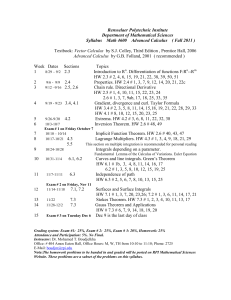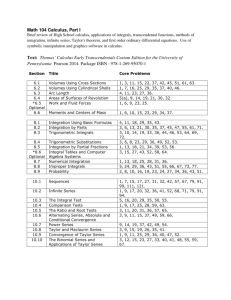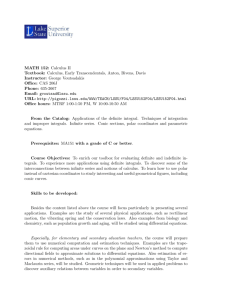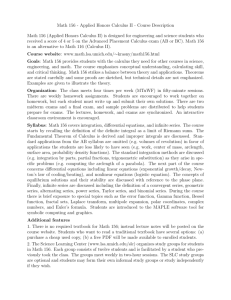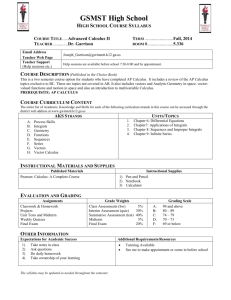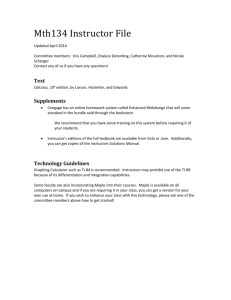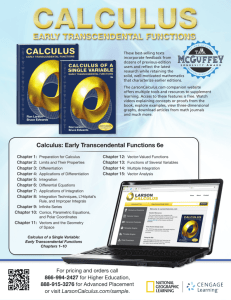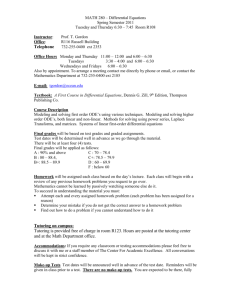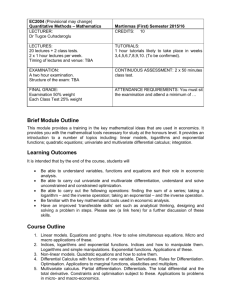here - Mathematical & Computer Sciences
advertisement
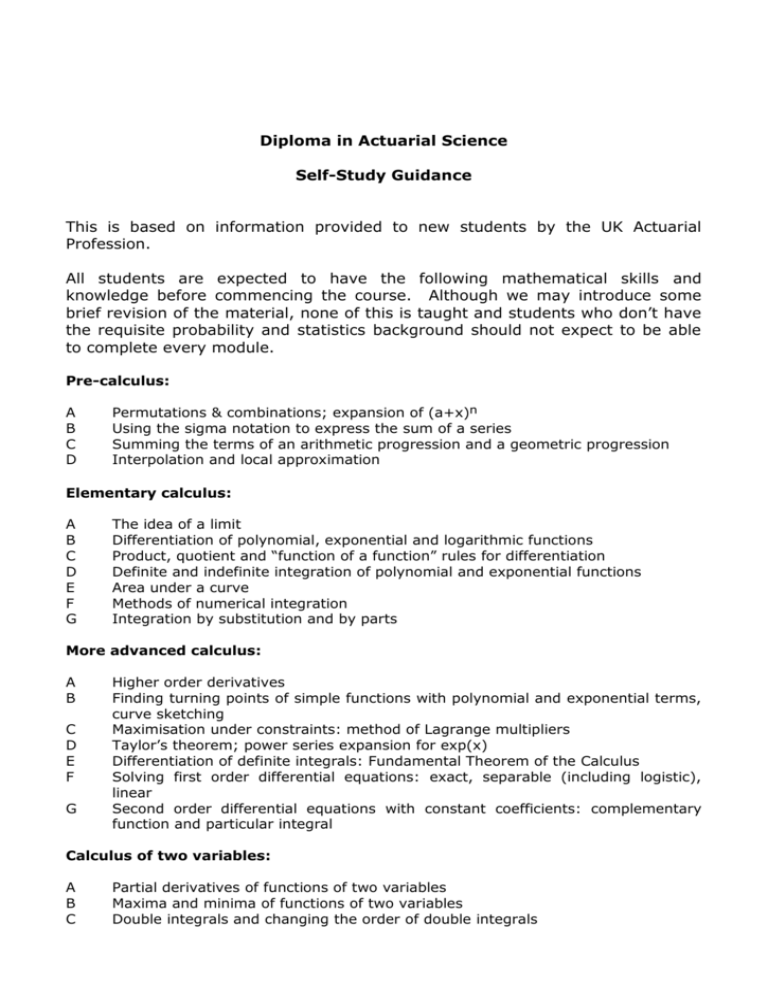
Diploma in Actuarial Science Self-Study Guidance This is based on information provided to new students by the UK Actuarial Profession. All students are expected to have the following mathematical skills and knowledge before commencing the course. Although we may introduce some brief revision of the material, none of this is taught and students who don’t have the requisite probability and statistics background should not expect to be able to complete every module. Pre-calculus: A B C D Permutations & combinations; expansion of (a+x)ⁿ Using the sigma notation to express the sum of a series Summing the terms of an arithmetic progression and a geometric progression Interpolation and local approximation Elementary calculus: A B C D E F G The idea of a limit Differentiation of polynomial, exponential and logarithmic functions Product, quotient and “function of a function” rules for differentiation Definite and indefinite integration of polynomial and exponential functions Area under a curve Methods of numerical integration Integration by substitution and by parts More advanced calculus: A B C D E F G Higher order derivatives Finding turning points of simple functions with polynomial and exponential terms, curve sketching Maximisation under constraints: method of Lagrange multipliers Taylor’s theorem; power series expansion for exp(x) Differentiation of definite integrals: Fundamental Theorem of the Calculus Solving first order differential equations: exact, separable (including logistic), linear Second order differential equations with constant coefficients: complementary function and particular integral Calculus of two variables: A B C Partial derivatives of functions of two variables Maxima and minima of functions of two variables Double integrals and changing the order of double integrals Algebra: A B C D E F Matrix addition and multiplication Determinant and inverse of a square matrix Using matrices and vectors to represent linear equations Solving simultaneous linear equations Complex numbers Linear difference equations with constant coefficients Probability: A B C D E F G Sample spaces, events The probability of an event Basic rules of probability Conditional probability Independent events Bayes Theorem Tree diagrams *we recommend that students who don’t know this material don’t register for the Stochastic Modelling and Financial Economics 2 modules. Statistics: A B C D E F Diagrams and displays Summary measures of level and variability (including standard deviation) Random variables Expectation Binominal and Poisson distributions Normal (Gaussian) distribution Recommended Text Books for Revision/Self-Study The “Schaum Outline” series from McGraw Hill is good for the fundamentals of mathematics (ask in your bookshop or library – or visit the website www.schaums.com) In particular: Advanced Calculus by Wrede & Spiegel Probability & Statistics by Spiegel, Schiller & Srinavasan. Other recommended books include: Elementary analysis: the theory of calculus: Ross: Springer A concise introduction to pure mathematics: Leibeck: Chapman & Hall Calculus with analytic geometry: Fraleigh: Addison Wesley Fundamentals of university mathematics: McGregor et al: Albion Miller & Miller: John E Freund’s Mathematical Statistics: Prentice Hall Essential Statistics: Rees: Chapman & Hall.


